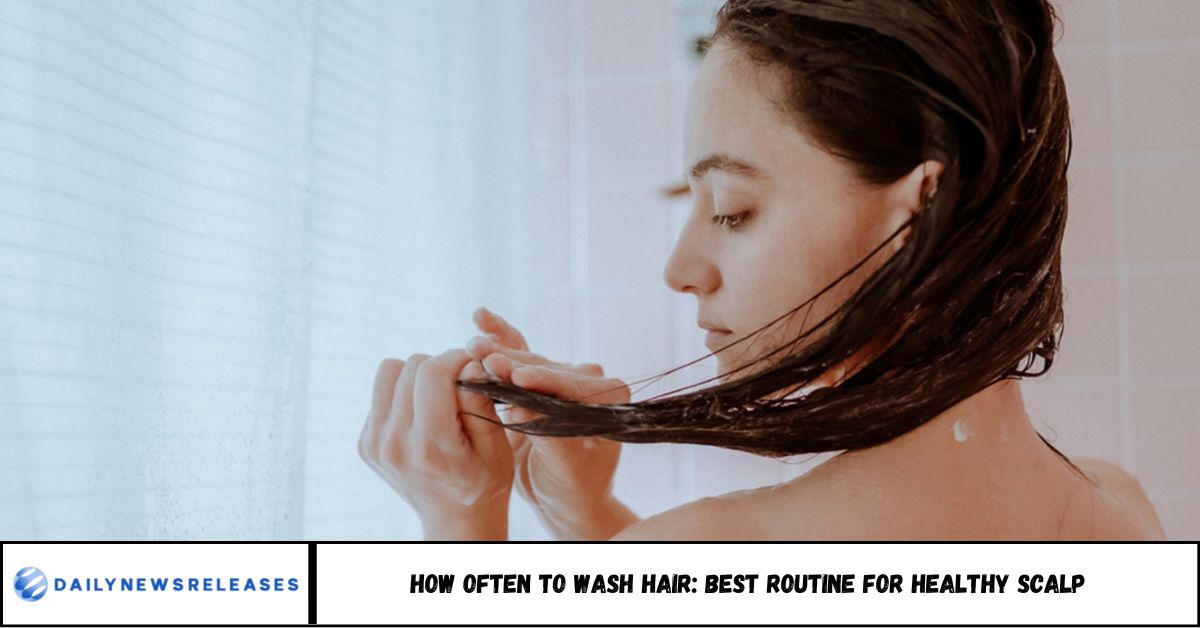Wondering how often you should really wash your hair? The answer depends on your scalp type, hair texture, and lifestyle. This guide breaks down what dermatologists and hair experts recommend for different hair types, how overwashing can damage your scalp, and how to build a routine that keeps your hair clean, shiny, and healthy without stripping away natural oils.
Do you ever wonder if you’re washing your hair too much—or not enough? Between conflicting advice, glossy shampoo ads, and TikTok trends, it’s easy to get confused. Some people swear by daily washing, while others go a week or more between shampoos. So, how often do you really need to wash your hair?
The truth is, there’s no one-size-fits-all answer. The ideal routine depends on your scalp’s oil production, hair texture, and even your environment. In this article, we’ll unpack the science of hair washing, explore the right frequency for different hair types, and reveal simple tips to keep your scalp balanced and your strands healthy.
Should you lather up daily or let your hair rest? It’s a debate as old as shampoo itself—and one that even experts can’t seem to agree on.
A recent survey of more than 2,000 women by Atomik Research found that nearly half wash their hair only two to three times a week, while 44 percent spend less than 30 seconds shampooing. Clearly, our washing habits are as varied as our hair types.
Interestingly, most trichologists still advocate daily washing to keep the scalp healthy and balanced. Yet, for many women—especially those with long, thick, or curly hair—that’s easier said than done. Speaking from experience, I’ve swung between both extremes: washing every day in pursuit of freshness, then stretching days between washes to protect my hair’s natural oils. So, how often is just right?
1. Why Washing Frequency Matters
Your scalp naturally produces sebum, an oil that moisturizes and protects your hair. Washing removes dirt, sweat, and excess oil—but too much washing strips away essential moisture.
- Overwashing can lead to dryness, irritation, and frizz.
- Underwashing can cause buildup, scalp odor, and dullness.
The goal? Finding the balance that keeps your hair clean while maintaining its natural protective barrier.
2. Hair Type Determines Your Wash Schedule
Oily Hair
If your scalp feels greasy within a day, you likely have overactive sebaceous glands.
- Wash every 1–2 days with a lightweight, balancing shampoo.
- Avoid heavy conditioners at the roots.
- Use dry shampoo between washes to absorb oil without buildup.
Expert insight: Studies show people with oily scalps may produce up to twice as much sebum daily as those with dry scalps, making regular cleansing essential.
Dry or Damaged Hair
If your hair feels coarse, brittle, or frizzy, it’s probably dry.
- Wash every 3–5 days to preserve natural oils.
- Choose sulfate-free, hydrating shampoos with ingredients like argan oil or glycerin.
- Always follow with conditioner and occasional hair masks.
Curly or Coily Hair
Curly textures naturally retain less moisture because oils struggle to travel down the hair shaft.
- Wash every 5–7 days or as needed.
- Consider co-washing (using conditioner instead of shampoo) between full washes.
- Focus shampoo only on the scalp—not the ends.
Fine or Thin Hair
Fine hair gets weighed down easily by oil and product buildup.
- Wash every other day with a volumizing or clarifying formula.
- Rinse thoroughly to avoid residue.
3. Lifestyle and Environment Matter Too
How often you should wash also depends on your daily routine:
- Exercise frequently? Sweat can clog follicles—wash after workouts.
- Live in a humid area? Humidity increases oil production—wash more often.
- Use styling products daily? Regular cleansing prevents residue buildup.
Conversely, in dry or cold climates, less frequent washing protects against environmental stress and static.
4. Signs You’re Washing Too Often
You might be overdoing it if you notice:
- Itchy, tight, or flaky scalp
- Increased frizz or breakage
- Hair that feels limp or lifeless hours after washing
If this sounds familiar, space out your washes or switch to gentler products. Remember: your scalp needs a natural oil layer to stay healthy.
5. The “Ideal” Routine—Backed by Experts
Most dermatologists agree:
- Normal hair/scalp: every 2–3 days
- Oily scalp: every 1–2 days
- Dry or textured hair: every 4–7 days
According to a 2024 dermatology report, over 60% of people who reduced their shampoo frequency noticed improved shine and less scalp irritation within four weeks.
6. Tips for Healthier Hair Washing
- Massage your scalp: Stimulates blood flow and removes buildup.
- Use lukewarm water: Hot water can strip protective oils.
- Don’t skip conditioner: It seals moisture and prevents tangling.
- Limit heat styling: Frequent blow-drying or straightening can undo healthy wash habits.
- Clarify monthly: Use a clarifying shampoo once a month to reset your scalp.
FAQs
1. Is it bad to wash your hair every day?
Daily washing can dry out your scalp unless you have oily hair or sweat heavily.
2. What happens if I don’t wash my hair for a week?
Oil and product buildup can clog follicles and cause dullness or odor.
3. Can I use dry shampoo instead of washing?
Yes, occasionally—but it shouldn’t replace regular washing. It absorbs oil but doesn’t clean.
4. Does water-only washing work?
It can help some people with sensitive scalps, but it doesn’t remove oil or pollutants effectively.
5. How often should I wash colored hair?
Every 3–4 days to preserve color and prevent fading. Use sulfate-free shampoo.
6. What’s the best time to wash your hair?
Morning washes boost volume; evening washes help you unwind and protect hair overnight.
Conclusion
There’s no universal rule for how often to wash your hair—it’s about listening to your scalp. For oily types, frequent cleansing keeps your hair fresh; for dry or curly hair, less is more. The key is finding your personal balance—one that keeps your scalp clean, your strands hydrated, and your confidence high.

